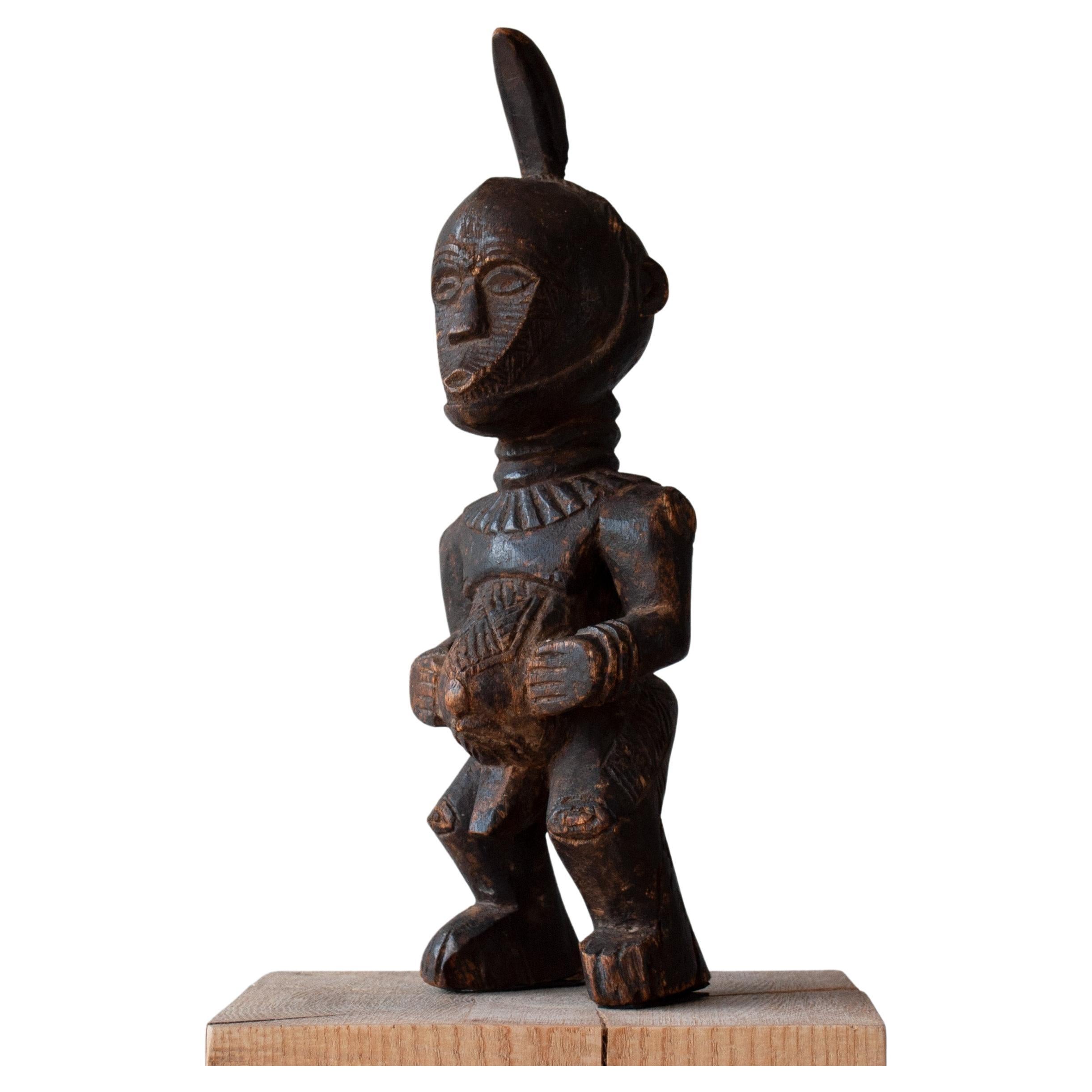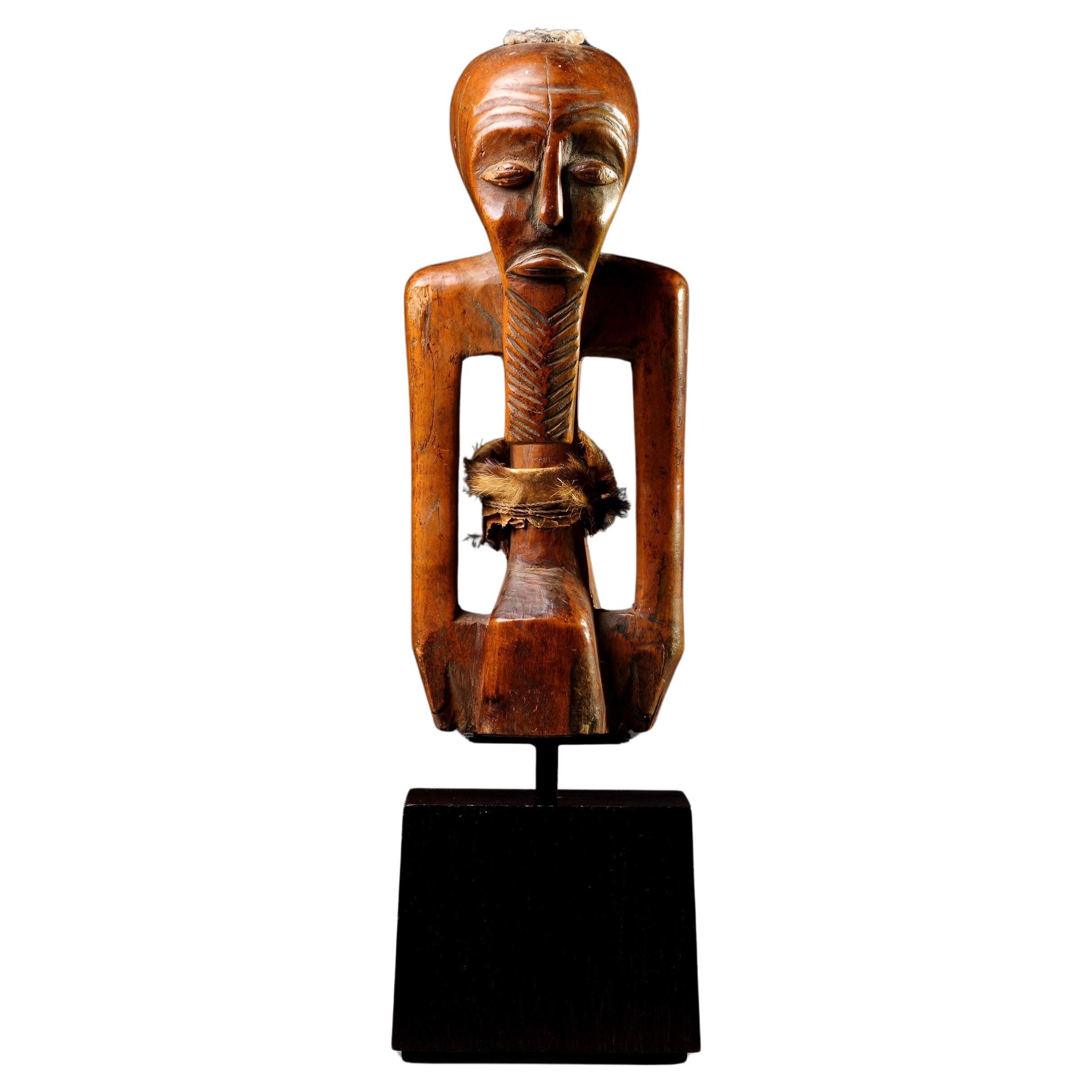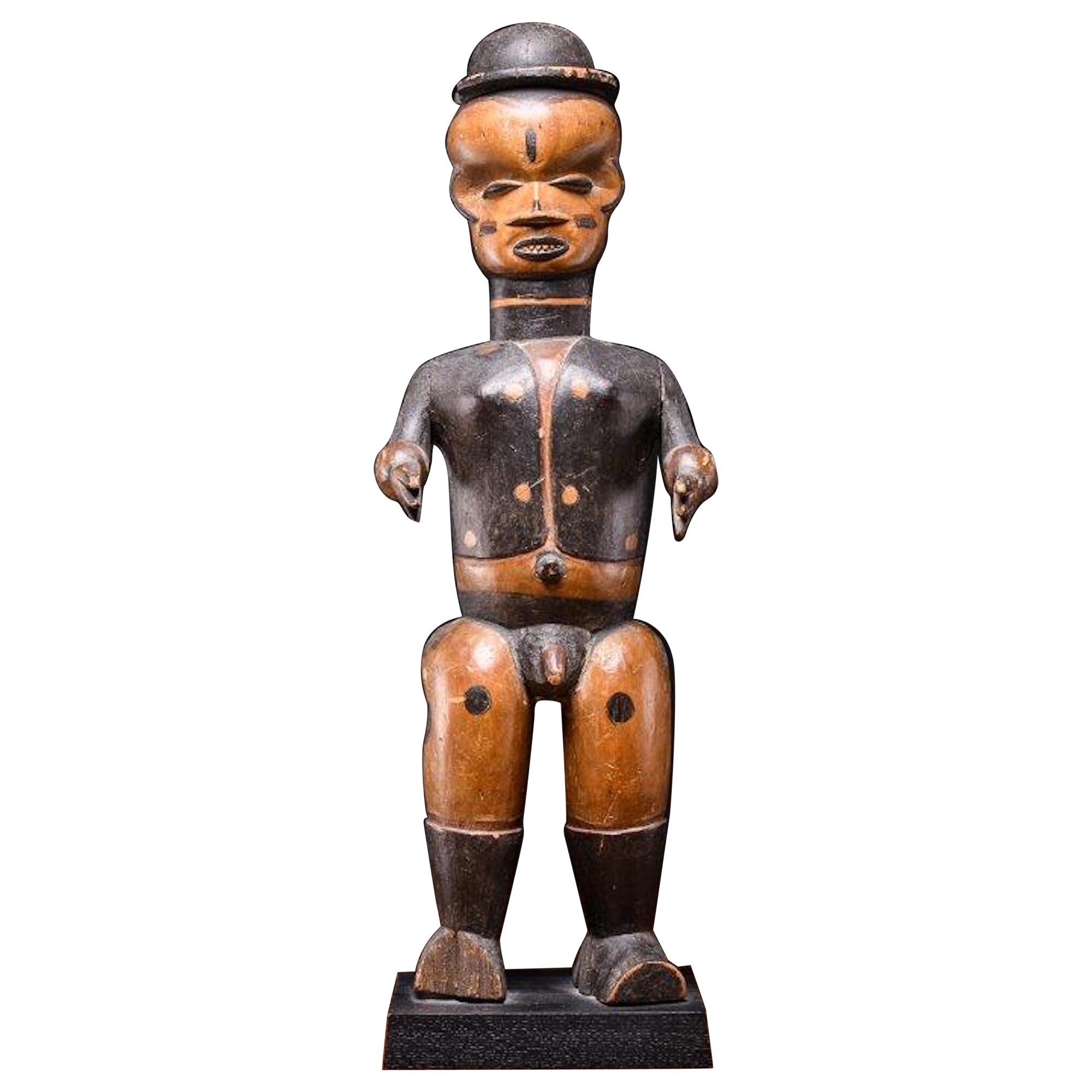Items Similar to A Songye Male ‘Power’ Figure
Want more images or videos?
Request additional images or videos from the seller
1 of 18
A Songye Male ‘Power’ Figure
About the Item
A Songye Male ‘Power’ Figure
Open aperture to the head and stomach
Fine overall patina, loss to feet
Democratic Republic of Congo
19th Century
Size: 23cm high - 9 ins high
The Michel Gaud collection
Sothebys Important African Art: ‘The Michel Gaud collection’, London, 29th November 1993, lot 132
Provenance:
The Michel Gaud collection
Sothebys Important African Art: ‘The Michel Gaud collection’, London, 29th November 1993, lot 132
Ex Private collection
- Dimensions:Height: 9 in (22.86 cm)Width: 5 in (12.7 cm)Depth: 5 in (12.7 cm)
- Materials and Techniques:
- Place of Origin:
- Period:
- Date of Manufacture:19th Century
- Condition:Wear consistent with age and use.
- Seller Location:London, GB
- Reference Number:1stDibs: LU9363239381722
About the Seller
No Reviews Yet
Vetted Seller
These experienced sellers undergo a comprehensive evaluation by our team of in-house experts.
Established in 1989
1stDibs seller since 2023
- ShippingRetrieving quote...Ships From: London, United Kingdom
- Return PolicyA return for this item may be initiated within 14 days of delivery.
More From This SellerView All
- A South Eastern Congo, Zaire Songye Protective Fetish Figure ‘Nkishi’Located in London, GBA South Eastern Congo, Zaire Songye Protective Fetish Figure ‘Nkishi’ of Geometric Form the arms placed to the side A plug of fetish material in the head cavity a strip of old hide and fur around the waist Old smooth crusted patination 19th Century – Early 20th Century Size: 20cm high – 8 ins high / 29.5cm high, 11½ ins high (including stand) The face of this protective figure is typical of the strong angularity of Songye carving. Amongst the Songye ‘Nkishi’ were associated with a magico-religious society known as ‘bukisi’ which controlled initiation camps and circumcision ceremonies. A shaman would ritually add magical substances ‘bashimba’ to activate the figure as a source of power that would give protection and ensure well-being. Larger figures ensured the tranquillity of the whole community and promoted village fecundity and fertility. Smaller personal or family ‘Nkishi’ were used for protection against illness, sorcery, witchcraft, and war and to promote fertility. Due to their considerable powers the figures were considered dangerous and so they were manoeuvred by means of rods or sticks attached to their arms. They were sometimes made to walk as if on parade. These small half figures were not always used as personal protective devices, but were placed in gourd bowls and used by diviners to communicate with the supernatural world. These divinatory calabash were filled with a number of symbolic objects such as chicken claws, teeth, stones, seeds, etc., as well as carved wooden figures. The Songye’s ritual use of calabash can be compared with the baskets used by the Tshokwe. Provenance: Ex English Private collection Acquired 1950’s Ex Finch and Co...Category
Antique 19th Century Congolese Tribal Art
MaterialsWood
- A Rare and Exceptional Carved Headrest ‘Kali Hahapo’Located in London, GBA Rare and Exceptional Carved Headrest ‘Kali Hahapo’ Excellent colour and patina Wood, sennet (coconut fibre), glass beads Tonga Late 18th / Early 19th Century SIZE: 19cm high, 5...Category
Antique Early 19th Century Tongan Tribal Art
MaterialsNatural Fiber, Glass, Wood, Coconut
- A Rare Wood Ear OrnamentLocated in London, GBA Rare Wood Ear Ornament With old collectors label ‘Ear Wood. Paraquay’ Wood Paraguay 19th Century Size: 6cm dia., 3.5cm deep - 2¼ ins dia., 1¼ ins deep Published: Steven Phe...Category
Antique 19th Century Paraguayan Tribal Art
MaterialsWood
- A Finely Carved ‘Boni’ Neck-RestLocated in London, GBA Finely Carved ‘Boni’ Neck-Rest Superb dark colour and patination through extended use Wood Somalia 19th Century SIZE: 18.5cm high, 15.5cm wide - 7¼ ins high, 6 ins wide These hea...Category
Antique 19th Century Tribal Art
MaterialsWood
- A Rare Spirit Mask ‘Barak’ or ‘Yamburai Parak’Located in London, GBA Rare Spirit Mask ‘Barak’ or ‘Yamburai Parak’ Wood, remains of polychrome Eastern Sepik Province, New Guinea Late 19th - early 20th Century SIZE: 45cm high, 35cm deep - 17¾ ins high, 13¾ ins deep Originally these masks were brightly coloured. However, after many years of exposure within the ceremonial houses the colour faded away through use and weathering. The mask was traditionally worn by a dancer whose plant fibre costume completely covered him, and was associated with an important male mythical being. The Barak (sometimes spelled ‘barag’ or ‘brag’) were situated to the west of the Sepik River. The Sepik River was first explored in 1885 by Otto Fisch. He wrote of the regions cultural diversity and beauty of the villages that he saw on the banks of the river over which towered the ‘men’s houses’. In the early 20th century collectors of primitive art were astounded at the sheer quantity of marvellous objects to be found in this region and the extraordinary inventiveness of the forms in this difficult swampy terrain. Provenance: Ex UK Art Market Ex Private collection CF ‘New Guinea Art...Category
Antique Late 19th Century Papua New Guinean Tribal Art
MaterialsWood
- A Very Rare Long Maori Paddle ‘Hoe’Located in London, GBA Very Rare Long Maori Paddle ‘Hoe’ Superb colour and patina Wood Maori / New Zealand Late 18th / early 19th Century Size: 217cm long - 85½ ins long Provenance: W.D. Webster, B...Category
Antique Late 18th Century New Zealand Tribal Art
MaterialsWood
You May Also Like
- Songye Nkisi Power FigureLocated in London, GBA rare and large hand carved horned Songye Nkisi power figure. A ‘Nkisi’ is a protective power figure of the Songye, southeastern Congo. Such sculptures are used as a major role in t...Category
20th Century Congolese Primitive Tribal Art
MaterialsWood
- Songye power figure NkisiLocated in London, GBSongye Power Figure NKISI Provenance: - Private collection, London, United Kingdom Songye Power Sculpture Like the Kongo and other related Bantu cul...Category
20th Century Congolese Tribal Art
MaterialsRaffia, Wood
- Songye Female Wood Figure with horn and brass hair ex SothebysLocated in Point Richmond, CACarved wood standing female figure with projecting stomach, attached horn on top of head, and hair in form of small hand shaped copper pieces. Old glass beads...Category
Mid-20th Century Congolese Tribal Tribal Art
MaterialsWood
- Ibibio Anthropomorphic Standing Male Janus Figure, NigeriaLocated in Leuven , BEThis elaborate Janus statue is a rare example of an Ibibio free-standing figure to recall a well-defined ancestor in what seems a European outfit .The Ibibios lend supernatural power...Category
20th Century Congolese Tribal Art
MaterialsWood
- Makonde Male Figure in European Dress African ArtLocated in Sharon, CTA beautiful modern piece of sculpture of a distinguished gentleman. Executed by a Makonde master carver in ebony. Well dressed, complete with cuffs, creases and shoes.Category
Mid-20th Century South African Tribal Tribal Art
MaterialsEbony
- Antique Afro Caribbean Wood Carving Male Ancestral FigureLocated in Rochester, NYExceptionally beautiful museum quality wood carving of a male ancestral type figure with perfectly aged original surface color patina. Ink stamped on underside West Indies and old pa...Category
Mid-20th Century Unknown Tribal Tribal Art
MaterialsWood





